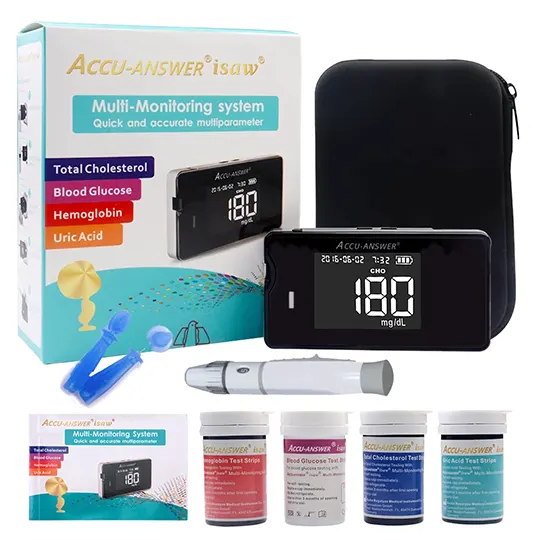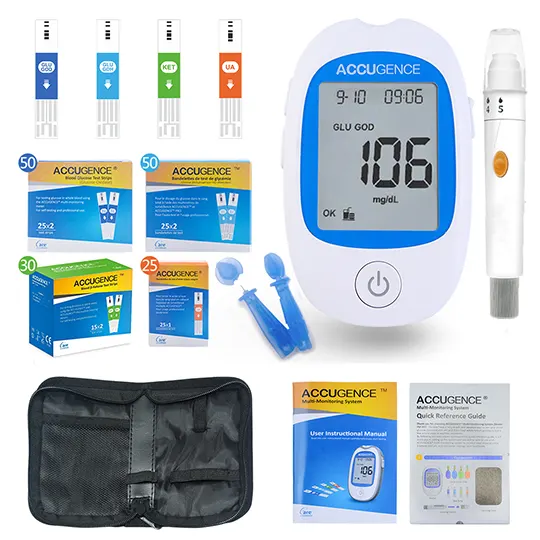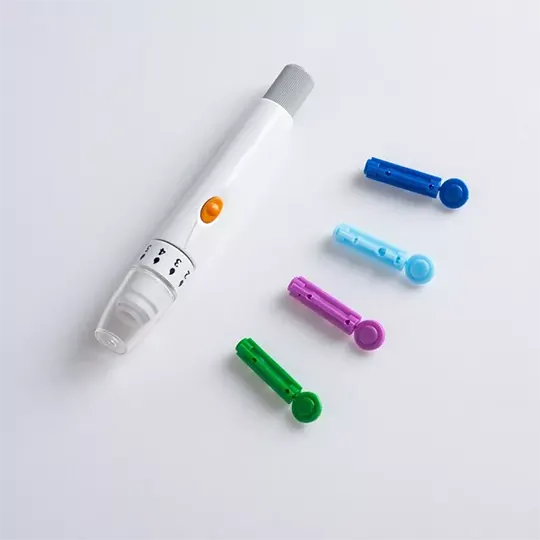Radian B Ibuprofen 5% w/w Gel
Active ingredient: ibuprofen
- 1. Name of the medicinal product
- 2. Qualitative and quantitative composition
- 3. Pharmaceutical form
- 4. Clinical particulars
- 4.1 Therapeutic indications
- 4.2 Posology and method of administration
- 4.3 Contraindications
- 4.4 Special warnings and precautions for use
- 4.5 Interaction with other medicinal products and other forms of interaction
- 4.6 Fertility, pregnancy and lactation
- 4.7 Effects on ability to drive and use machines
- 4.8 Undesirable effects
- 4.9 Overdose
- 5. Pharmacological properties
- 5.1 Pharmacodynamic properties
- 5.2 Pharmacokinetic properties
- 5.3 Preclinical safety data
- 6. Pharmaceutical particulars
- 6.1 List of excipients
- 6.2 Incompatibilities
- 6.3 Shelf life
- 6.4 Special precautions for storage
- 6.5 Nature and contents of container
- 6.6 Special precautions for disposal and other handling
- 7. Marketing authorisation holder
- 8. Marketing authorisation number(s)
- 9. Date of first authorisation/renewal of the authorisation
- 10. Date of revision of the text
1. Name of the medicinal product
Radian B Anti-Inflammatory Ibuprofen 5% w/w Gel
Care Ibuprofen 5% w/w Gel
2. Qualitative and quantitative composition
Ibuprofen 5.0%w/w
Excipient(s) with known effect
Benzyl Alcohol 1.0% w/w
For the full list of excipients, see section 6.1.
3. Pharmaceutical form
Gel for topical application
4. Clinical particulars
4.1 Therapeutic indications
Topical analgesic and anti-inflammatory for backache, rheumatic and muscular pain, sprains and sports injuries.
4.2 Posology and method of administration
Strength 5% maximum
Method of Administration
For topical application to the skin
Dosage
Adults, the elderly and children over 14 years:
Squeeze 5 to 10cm of the gel (containing 50 to 100mg of ibuprofen) from the tube and lightly rub into the affected area until absorbed.
The dose should not be repeated more frequently than every four hours and no more than 4 times in any 24 hour period.
Wash hands after each application. Do not exceed the stated dose. Unless recommended by a doctor advice should be sought about continued treatment if symptoms persist for more than 2 weeks.
Children under 14 years: Do not use on children under 14 years of age except on the advice of a doctor.
4.3 Contraindications
Hypersensitivity to ibuprofen or any of the excipients in the product.
Patients who have previously shown hypersensitivity reactions (e.g. asthma, rhinitis, angioedema, or urticaria) in response to aspirin or other NSAIDs.
Patients suffering from renal failure.
4.4 Special warnings and precautions for use
Apply with gentle massage only. Avoid contact with eyes, mucous membranes and inflamed or broken skin.
Discontinue if rash develops.
Hands should be washed immediately after use.
Not for use with occlusive dressings.
Not to be used during pregnancy or lactation.
Oral NSAIDs, including ibuprofen, can sometimes be associated with renal impairment, aggravation of active peptic ulcers, and can induce allergic bronchial reactions in susceptible asthmatic patients. Although the systemic absorption of topically applied ibuprofen is less than for oral dosage forms, these complications can occur in rare cases. For these reasons, patients with a history of kidney problems, an active peptic ulcer, asthma or intolerance to aspirin or ibuprofen should seek medical advice before using Radian B Ibuprofen 5% w/w Gel.
Avoid excessive sunlight exposure on the treated area as this may possibly lead to photosensitisation.
Keep out of the sight and reach of children.
Instruct patients not to smoke or go near naked flames – risk of severe burns. Fabric (clothing, bedding, dressings etc) that has been in contact with this product burns more easily and is a serious fire hazard. Washing clothing and bedding may reduce product build-up but not totally remove it.
Severe skin reactions
Serious skin reactions, some of them fatal, including exfoliative dermatitis, Stevens-Johnson syndrome, and toxic epidermal necrolysis have been reported rarely in association with the use of NSAIDs (see section 4.8). Patients appear to be at highest risk of these reactions early in the course of therapy, the onset of the reaction occurring in the majority of cases within the first month of treatment. Acute generalised exanthematous pustulosis (AGEP) has been reported in relation to ibuprofen-containing products. Ibuprofen should be discontinued, at the first appearance of signs and symptoms of severe skin reactions, such as skin rash, mucosal lesions, or any other sign of hypersensitivity.
Ingredients with specified warnings
This medicine contains 1% w/w Benzyl Alcohol which may cause mild local skin irritation (allergic reactions).
4.5 Interaction with other medicinal products and other forms of interaction
Concurrent use of aspirin or other NSAIDs may result in an increased incidence of adverse reactions.
4.6 Fertility, pregnancy and lactation
Not to be used during pregnancy or lactation. Whilst no teratogenic effects have been demonstrated in animal experiments, Ibuprofen should be avoided during pregnancy. The onset of labour may be delayed and duration of labour increased. Ibuprofen appears in breast milk in very low concentration and is unlikely to affect the breast fed infant adversely.
4.7 Effects on ability to drive and use machines
None known
4.8 Undesirable effects
Skin disorders are most frequently reported.
Skin and subcutaneous tissue disorders
Application site reactions, rashes, pruritis, and urticaria.
Frequency not known: Acute generalised exanthematous pustulosis (AGEP)
Gastro-intestinal: abdominal pain, dyspepsia.
Respiratory: bronchospasm may be precipitated in patients suffering from or with a previous history of bronchial asthma or allergic disease.
Hypersensitivity reactions have been reported following treatment with ibuprofen. These may consist of a) non-specific allergic reactions and anaphylaxis, b) respiratory tract reactivity comprising of asthma, aggravated asthma, bronchospasm or dyspnoea, or c) assorted skin disorders, including rashes of various types, pruritis, urticaria, purpura, angioedema and, less commonly, bullous dermatoses (including epidermal necrolysis and erythema multiforme).
Other adverse effects reported very rarely include renal failure.
Reporting suspected adverse reactions
Reporting suspected adverse reactions after authorisation of the medicinal product is important. It allows continued monitoring of the benefit/risk balance of the medicinal product. Healthcare professionals are asked to report any suspected adverse reactions via the Yellow Card Scheme at: www.mhra.gov.uk/yellowcard or search MHRA Yellow Card in the Google Play or Apple App Store.
4.9 Overdose
Overdosage with a topical presentation of ibuprofen gel is unlikely; however, it may be encountered following excessive use or accidental ingestion.
In children ingestion of more than 400mg/kg may cause symptoms. In adults the dose response effect is less clear cut. The half-life in overdose is 1.5-3 hours.
Symptoms
Most patients who have ingested or been exposed to clinically important amounts of NSAIDs will develop no more than nausea, vomiting, epigastric pain, or more rarely diarrhoea. Tinnitus, headache and gastrointestinal bleeding are also possible. In more serious poisoning, toxicity is seen in the central nervous system, manifesting as drowsiness, occasionally excitation and disorientation or coma. Occasionally patients develop convulsions. In serious poisoning metabolic acidosis may occur and the prothrombin time/INR may be prolonged, probably due to interference with the actions of circulating clotting factors. Acute renal failure and liver damage may occur. Exacerbation of asthma is possible in asthmatics.
Management
Management should be symptomatic and supportive and include the maintenance of a clear airway and monitoring of cardiac and vital signs until stable. Consider oral administration of activated charcoal if the patient presents within 1 hour of ingestion of a potentially toxic amount. If frequent or prolonged, convulsions should be treated with intravenous diazepam or lorazepam. Give bronchodilators for asthma.
5. Pharmacological properties
5.1 Pharmacodynamic properties
Ibuprofen is a non-steroidal anti-inflammatory drug which has been tested and proved to be effective as an analgesic, anti-pyretic and anti-inflammatory after systemic administration. When administered as a topical preparation ibuprofen has been shown to be an effective topical analgesic and anti-inflammatory for the relief of rheumatic and muscular pain, backache, sprains, strains, lumbago and fibrositis by virtue of precutaneous absorption.
Radian B Ibuprofen Gel or Care Ibuprofen 5% Gel is a clear odourless gel. Following application to the affected area, it initially feels cool to the skin and is free from skin warming effects.
5.2 Pharmacokinetic properties
The gel product containing ibuprofen diffuses through the skin as a function of time and after 24 hours an application to human skin shows that the dose administered is present in the epidermis and dermis. Percutaneous absorption of this 5% ibuprofen gel is approximately 5% that of oral ibuprofen. Therapeutic concentrations are reached locally but not systemically.
5.3 Preclinical safety data
There are no new data published on the active ingredient.
6. Pharmaceutical particulars
6.1 List of excipients
Hydroxyethylcellulose
Sodium Hydroxide
Benzyl Alcohol
Isopropyl Alcohol
Purified Water
6.2 Incompatibilities
None known
6.3 Shelf life
36 months – Aluminium Tube
6.4 Special precautions for storage
Store below 25°C. Replace cap tightly after use.
6.5 Nature and contents of container
Aluminium tube with internal epoxy phenolic coating containing 30g, 50g or 100g of Ibuprofen Gel
6.6 Special precautions for disposal and other handling
None
7. Marketing authorisation holder
Thornton & Ross Limited
Linthwaite
Huddersfield
West Yorkshire
HD7 5QH
United Kingdom
8. Marketing authorisation number
PL 00240/0358
9. Date of first authorisation/renewal of the authorisation
14/05/2002
10. Date of revision of the text
03/12/2020




